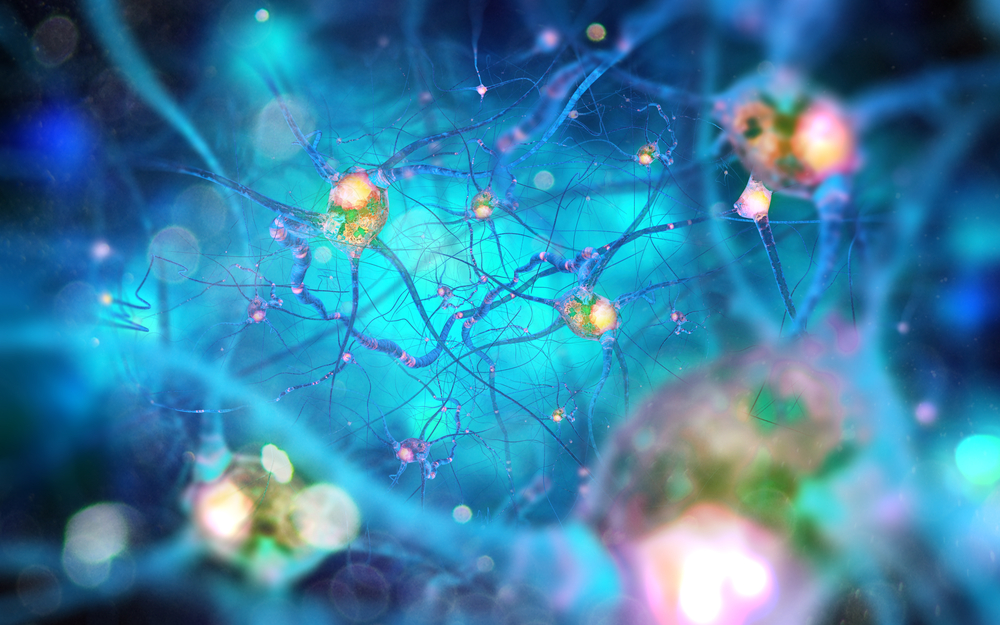SYT13 Gene Can Prolong Life in Mice With ALS, SMA, Study Shows

Andrii Vodolazhskyi/Shutterstock
A gene called synaptotagmin 13 (SYT13) can prolong the lifespan and prevent the destruction of motor neurons in mouse models of amyotrophic lateral sclerosis (ALS) and spinal muscular atrophy (SMA), according to a study.
The study, “Synaptotagmin 13 is neuroprotective across motor neuron diseases,” was published in the journal Acta Neuropathologica.
ALS and SMA are neurodegenerative disorders characterized by the gradual loss of motor neurons — the nerve cells responsible for controlling voluntary muscles — in the spinal cord and parts of the brain. This leads to progressive muscle weakness, atrophy (shrinkage), and paralysis.
Not all motor neurons are destroyed over the course of these disorders. Studies have found that motor neurons controlling eye movements, called oculomotor neurons (OMNs), are highly resistant to degeneration and remain functional in people and animals with ALS and SMA.
“The mechanisms responsible for this selective degeneration are largely unknown, but the molecular signatures of resistant and vulnerable motor neurons are distinct and offer clues to neuronal resilience and susceptibility,” the study’s authors wrote.
Researchers at Karolinska Institutet in collaboration with colleagues at the University of Milan found that SYT13 may render OMNs more resistant to neurodegeneration.
They found that SYT13 was more active in healthy OMNs from mice, rats, and humans, compared with motor neurons in the spinal cord, which are usually more sensitive to neurodegeneration brought on by ALS and SMA.
Moreover, they found that SYT13 was enriched in OMNs, as well as spinal motor neurons that had resisted neurodegeneration, isolated from patients with end-stage ALS.
To study the function of SYT13 in more detail, the investigators forced motor neurons derived from induced pluripotent stem cells (iPSCs) isolated from patients with ALS and SMA to express the SYT13 gene. These iPSCs are fully matured cells that can be reprogrammed back to a stem-cell state, from which they are able to grow into almost any type of cell.
The researchers found that patient-derived motor neurons became more resilient to neurodegeneration and survived longer in a lab dish. SYT13 protected the cells from degeneration by reducing endoplasmatic reticulum (ER) stress and blocking programmed cell death (apoptosis). The ER is the site of synthesis and folding of several types of proteins within the cell.
These effects were found in motor neurons derived from patients with both disorders, indicating the protective effect of SYT13 is independent of the genetic cause of each disorder.
“This is extremely useful from a therapeutic perspective, since the mechanisms behind neuronal loss are largely unknown in 90 percent of all ALS patients and can differ from one individual to another,” Eva Hedlund, PhD, researcher in the neuroscience department at Karolinska Institutet and one of the senior authors of the study, said in a press release.
Mice with ALS and SMA were treated with a gene therapy that used a harmless adeno-associated virus (AAV) vector, called adeno-associated virus 9 (AAV9), to deliver Syt13 (the mouse equivalent to the human SYT13 gene).
Treatment lengthened the lifespan of ALS mice by 14% and SMA mice by 50%, preventing motor neuron degeneration and delaying muscle denervation (loss of nerve supply).
“Our results suggest that SYT13 is a very promising gene therapy candidate for patients with motor neuron disease,” said Monica Nizzardo, researcher at the Centro Dino Ferrari, University of Milan, IRCCS Fondazione Ca’ Granda, Ospedale Maggiore Policlinico and the study’s first author.
“We’ll continue looking for additional factors that are unique to resistant motor neurons, and thus identify more potential therapeutic targets,” Hedlund said.







